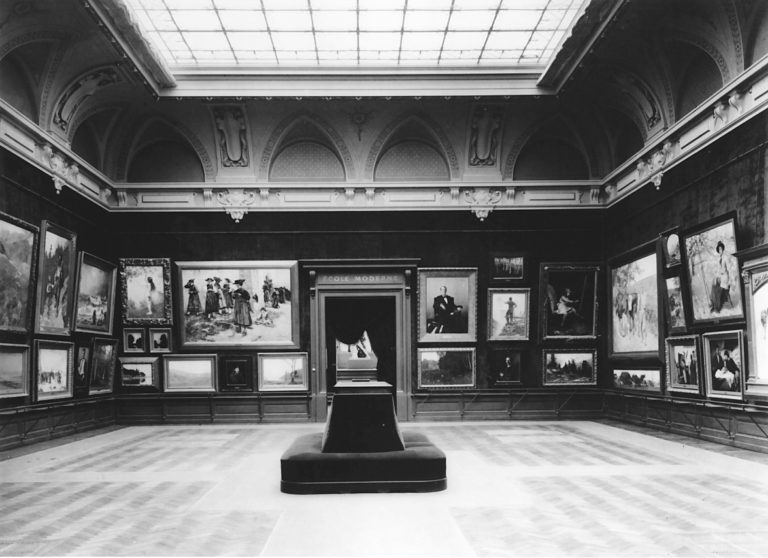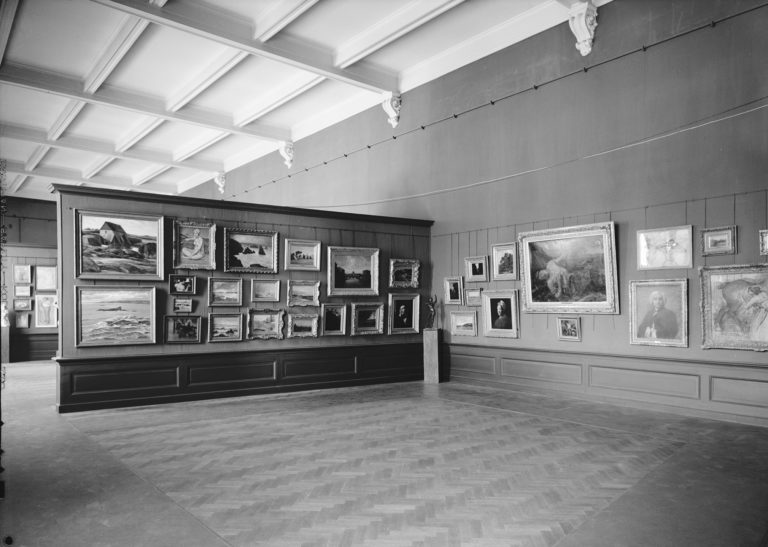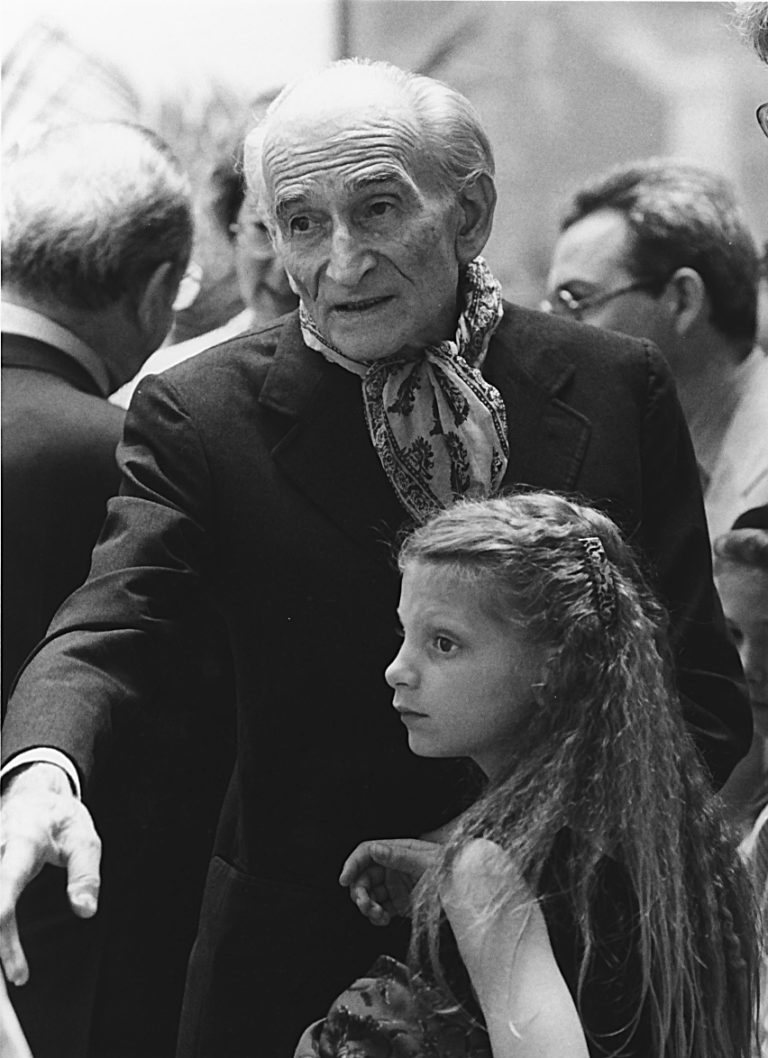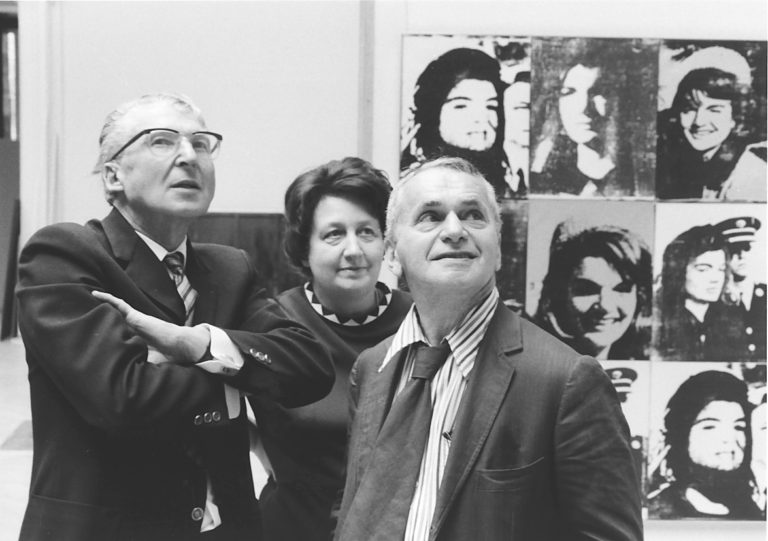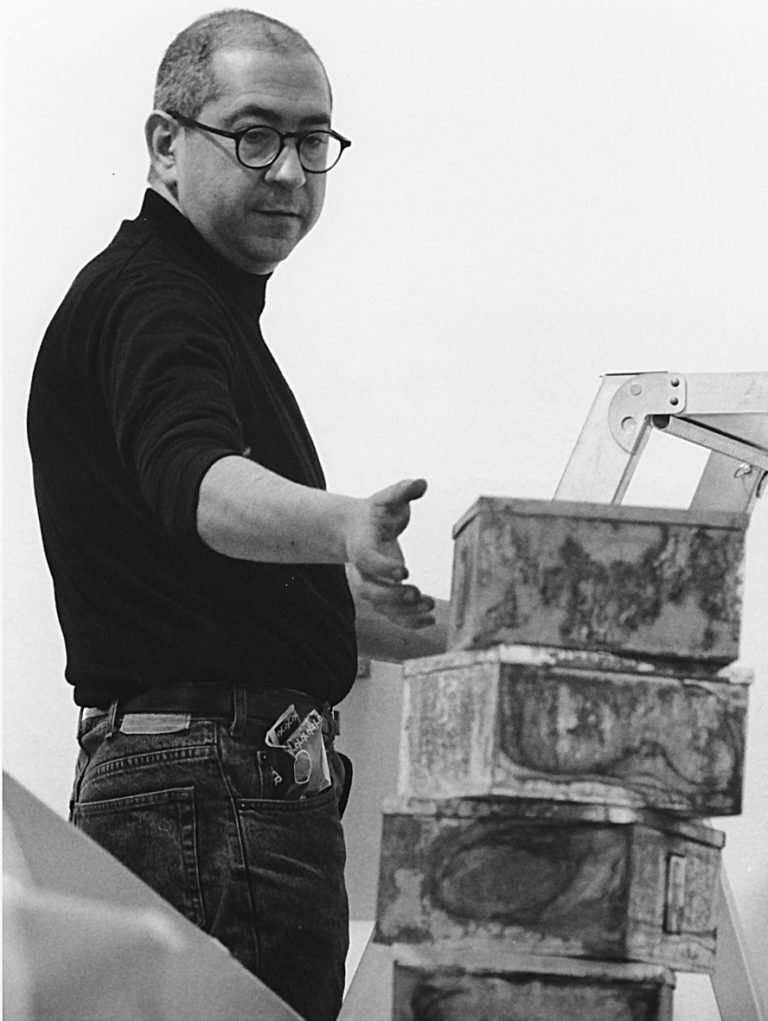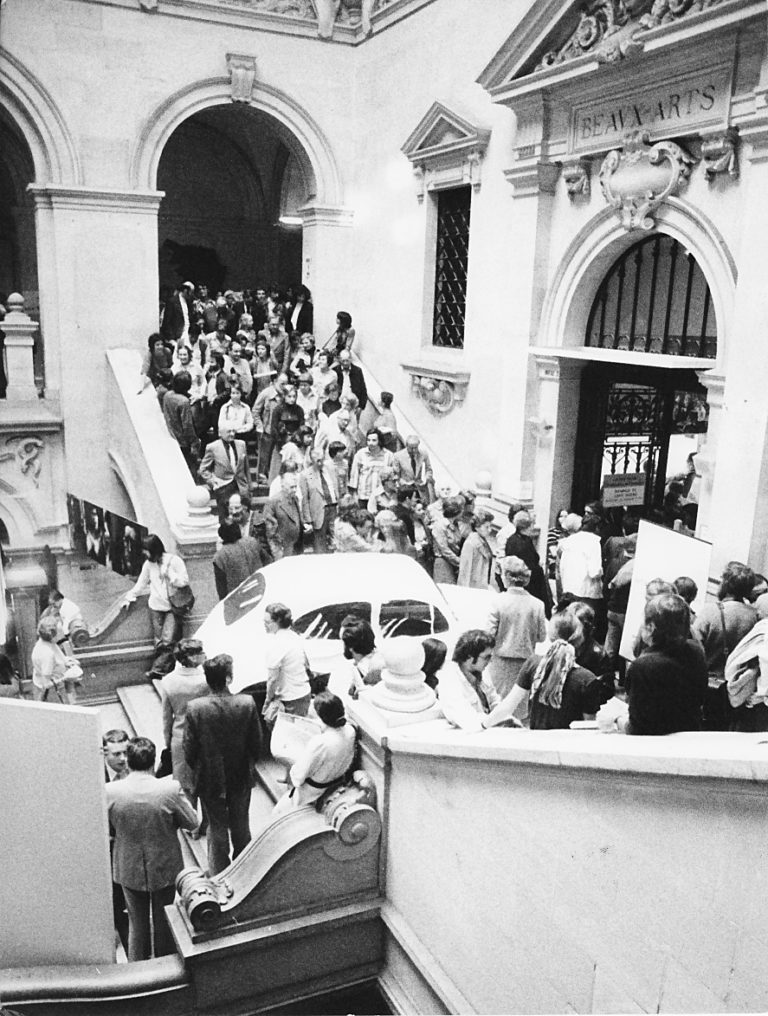MCBA history
Early days
1804
Daniel-Alexandre Chavannes, member of the Société d’émulation, a scholarly society for art lovers in the canton of Vaud, asks Louis Ducros, a local artist living in Rome, to join him in setting up a drawing school in Lausanne.
1808
Now back in Lausanne, Ducros teaches drawing and lets students consult his collection of paintings by Italian masters and his own watercolours.
1811
Enlightened citizens launch a subscription to keep Ducros’s collection together following his death in 1810.
1816
The State of Vaud refunds the subscribers, creating a core collection of over 650 works for the later Museum of Fine Arts.
The Museum at the Academy
1818
The first canton museum is founded at the Academy of Lausanne, not far from the cathedral, featuring items of scientific interest and the Ducros art collection.
1821
The Academy incorporates a drawing school. The first director, appointed the following year, is the painter Louis Arlaud.
1834
Louis Arlaud provides funding towards a building for the drawing school and a Museum of Fine Arts. The building on the south side of Place de la Riponne is designed by the Vaud-based architect Louis Wenger, in a neo-Classical style.
1840
The lower part of the new building is funded by the Lausanne municipal authorities, which use the premises for primary schools. The State of Vaud finances the upper part of the building, using the ground floor for the drawing school and the upper floor for the museum.
The Arlaud Museum
1841
The Arlaud Museum is inaugurated. Works of the French and Northern schools donated by Louis Arlaud are exhibited alongside the Ducros collection.
1845 – 1894
The museum is managed in turn by Jean-Samson Guignard, Charles Lardy, Auguste Piot, Godefroy de Blonay and Léon de la Cressonnière. The museum expands its collection of contemporary Swiss art.
1850
The Musée Arlaud hosts its first major temporary exhibition, featuring L’Exécution du Major Davel, a monumental painting commissioned from Charles Gleyre, an academic painter from the canton living in Paris.
1871
The Russian Gabriel de Rumine bequeaths the city of Lausanne a large sum of money for a public building.
1888
The city of Lausanne and the State of Vaud decide to use Gabriel de Rumine’s bequest to finance part of a new building to house municipal services, university lecture halls, the central library for the canton, and various museums, including the Museum of Fine Arts.
1889
An international architecture competition is launched to design the Palais de Rumine on a site between Place de la Riponne and La Cité. A neo-Florentine design by Gaspard André, an architect from Lyon, is selected in 1890.
1894 – 1935
Émile Bonjour is the museum’s director. He acquires a painting by Félix Vallotton in 1896, starting the largest publicly owned collection of works by the artist, currently standing at 556 items. He also oversees the installation of the museum’s collections in the Palais de Rumine when the Arlaud Museum closes in 1904.
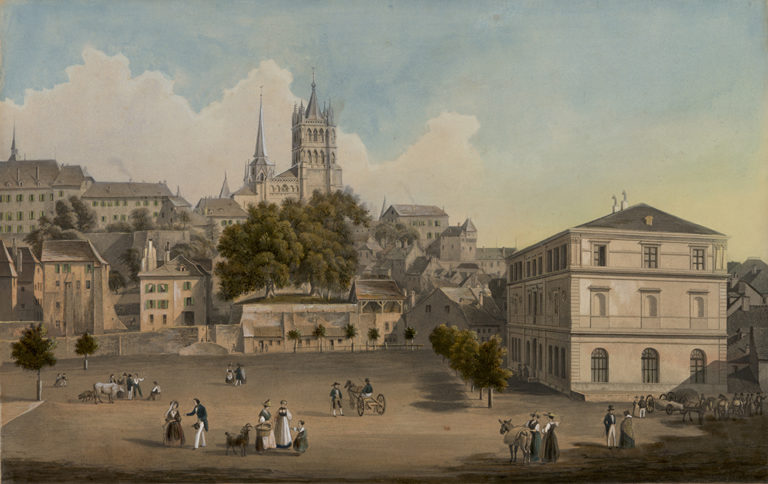 Friedrich von Martens, « La place de la Riponne »; on the right, the Arlaud Museum, circa 1845. Etching, watercolour and gouache on paper, 22,7 x 40 cm © Musée historique de Lausanne
Friedrich von Martens, « La place de la Riponne »; on the right, the Arlaud Museum, circa 1845. Etching, watercolour and gouache on paper, 22,7 x 40 cm © Musée historique de Lausanne
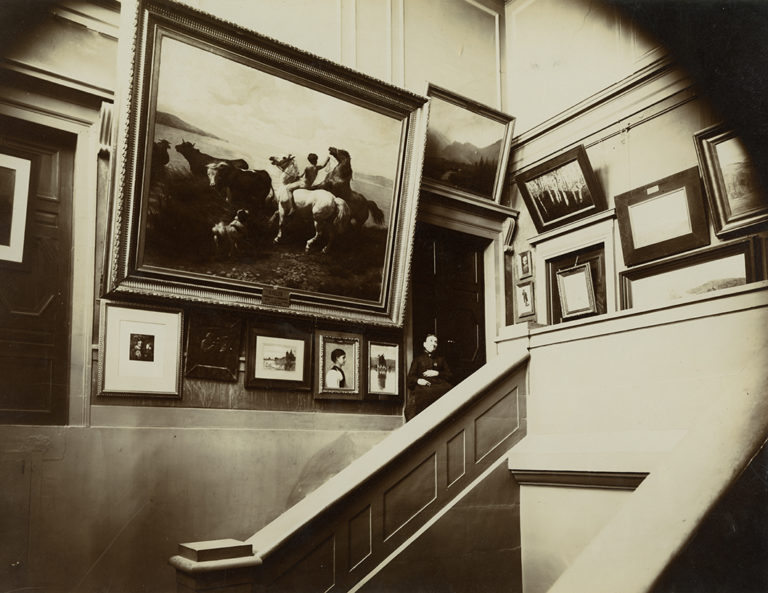 Inside the Arlaud Museum, 1904. Photography, 29,4 x 39 cm. On the wall, amongst others: Johann Rudolf Koller, « Baignade de chevaux », 1873. © Musée cantonal des Beaux-Arts de Lausanne
Inside the Arlaud Museum, 1904. Photography, 29,4 x 39 cm. On the wall, amongst others: Johann Rudolf Koller, « Baignade de chevaux », 1873. © Musée cantonal des Beaux-Arts de Lausanne
The Palais de Rumine
1906
The Palais de Rumine is inaugurated. The Museum of Fine Arts, on the second floor of the north wing, is officially opened on July 17.
1908
Émile Bonjour negotiates the acquisition of Charles Gleyre’s studio collection, one of the mainstays of the museum’s holdings, now standing at 487 works. At his request, the Lausanne-based doctor Henri-Auguste Widmer agrees to bequeath his collection of international modern art to the museum.
1915
Émile Bonjour alerts the Canton to the lack of space for the museum at the Palais de Rumine.
1936 – 1951
Jean Descoullayes is the museum’s director. It receives 335 works from the Widmer bequest in 1936 and 1939. In 1938, Jean Descoullayes organises a retrospective for the artist Alice Bailly, the first temporary exhibition at the museum. Temporary exhibitions become the norm in 1942, with the permanent collection being shown episodically from then on. Topics for temporary exhibitions include Basel’s Gruppe 33, painters from Lake Geneva, modern Dutch art, forty years of Italian art from Futurism to the present, treasures of Venitian art, and a centenary celebration of Gauguin.
1951 – 1962
Ernest Manganel is the museum’s director. He acquires a major set of 623 drawings by Louis Soutter, now one of the collection’s leading artists. He sets the policy followed to this day of alternating major names from the collection such as Louis Ducros, Félix Vallotton, René Auberjonois, Louis Soutter, and Marius Borgeaud, contemporary art by Vaud-based artists at the Salon des jeunes, exhibitions of works by the Société des peintres, sculpteurs et architectes suisses, and international art in exhibitions such as Rythmes et couleurs and Du futurisme à l’art abstrait.
1962 – 1981
René Berger is the museum’s director. 1962 sees the first International Tapestry Biennial at the museum, with fourteen subsequent editions. In 1963, 1966 and 1970, the museum hosts three editions of the Salon international des galeries-pilotes, an innovative concept bringing galleries from all over the world to Lausanne to showcase major trends in international contemporary art. Over 180 works by the artist Aloïse, a native of the canton, join the collection in 1966. In 1970 René Berger curates a retrospective of art by Théophile-Alexandre Steinlen, building up a special collection that now stands at 586 works. René Berger founds the Association des Amis du Musée in 1980.
1981 – 1991
Erika Billeter is the museum’s first female director. She organises major exhibitions on Swiss and international contemporary art, with shows including Berlin la rage de peindre, Luciano Castelli, New York Now, Joseph Beuys, Martin Disler, Christo, Peintres mexicains, Leiko Ikemura, Alfred Hofkunst, Francesco Clemente, Erik Fischl, and Rolf Iseli alongside ambitious shows on themes including self-portraits in the age of photography, women and Surrealism, and Nature as a creation of painters. Highlights of the collection are shown in other exhibitions such as Les frères Sablet, Louis Ducros, Arnulf Rainer-Louis Soutter, La Suisse romande entre les deux guerres, Gustave Buchet, and Chefs-d’œuvre du Musée cantonal des Beaux-Arts, while emerging artists from the canton such as Jean Otth, Silvie and Chérif Defraoui, and Jean Lecoultre are also given showcases.
1991
The State Council decides to move the museum to its own building.
1991 – 2000
Jörg Zutter is the museum’s director. He focuses on developing the collection for the new building with ambitious acquisitions such as Charles Gleyre’s Danse des bacchantes, devoting three rooms to the permanent exhibition. He launches the journal Les Cahiers du Musée and organises retrospectives of the artists best represented in the collection, including Louis Ducros, Félix Vallotton, La collection dévoilée, René Auberjonois, Ernest Biéler, and Jean Otth. He maintains an international presence in modern and contemporary art with exhibitions on Balthus, Aristide Maillol, COBRA, Gustave Courbet, Édouard Vuillard, Bruce Nauman, Michel Verjux, Christian Boltanski, Bill Viola, Sophie Calle, and Thomas Huber.
1999
A location for the new museum is sought. A site in Bellerive on the shores of Lake Geneva is selected in 2001.
2001 – 2006
Yves Aupetitallot is the museum’s director. To prepare for the museum’s forthcoming move, he plans exhibitions on key moments from its own history such as Inside the sixties: g.p. 1.2.3. Le Salon international de galeries-pilotes à Lausanne and develops collaborations with Swiss artists such as Olivier Mosset and international names including Ellsworth Kelly, Albert Oehlen, and Tom Burr. He also forges closer bonds with private collections such as the Pierre Huber Collection and organises retrospectives of major Vaud-based artists include Louis Soutter, Eugène Burnand, Alice Bailly, and Charles Gleyre. 2003 sees the first edition of Accrochage [Vaud], an annual exhibition dedicated to the local art scene.
2002 – 2005
A foundation is set up to oversee the establishment of the new Museum of Fine Arts. The Vaud Cantonal Parliament votes the credits for preliminary studies for a new museum building in 2008-2009. An international architecture competition for the new museum in Bellerive is launched in 2004 and a project by the Zurich agency Berrel Wülser Kräutler Architekten is selected in 2005.
2007 to the present day
Bernard Fibicher is the museum’s director. He seeks to develop the permanent collection with major acquisitions such as Jacques Sablet’s La Tarentelle de Jacques Sablet) and organises exhibitions showcasing its major holdings (Steinlen, Grasset, Aloïse, Alex Katz & Félix Vallotton, Raisons et Sentiments). He alternates thematic exhibitions such as Incongru: quand l’art fait rire and Comme des bêtes with shows devoted to modern artists like Giovanni Giacometti, Marino Marini, Germaine Richier, Piero Manzoni, and August Strindberg and contemporary artists such as Alfredo Jaar, Renée Green, Esther Shalev-Gerz, Kader Attia, Giuseppe Penone, and Yael Bartana. The museum acquires its first works by non-Western artists, shown at the exhibitions Magie du paysage russe, Nalani Malani, and Ai Weiwei, the last exhibition at the Palais de Rumine.
2008 – 2018
A referendum refuses funding to complete the planned new museum building in Bellerive. In 2009, the State Council approves a new site close to the train station. A second international architectural competition is organised in 2010 and a design by the Barcelona agency Estudio Barozzi Veiga is selected in 2011. The following year the decision is taken to use the site for an ambitious visual arts hub, PLATEFORME 10, which by 2021 will incorporate MCBA, mudac, and the Musée de l’Elysée. Work begins in 2016 with a ceremony to lay the foundation stone. In 2018, the new museum becomes a foundation under public law.
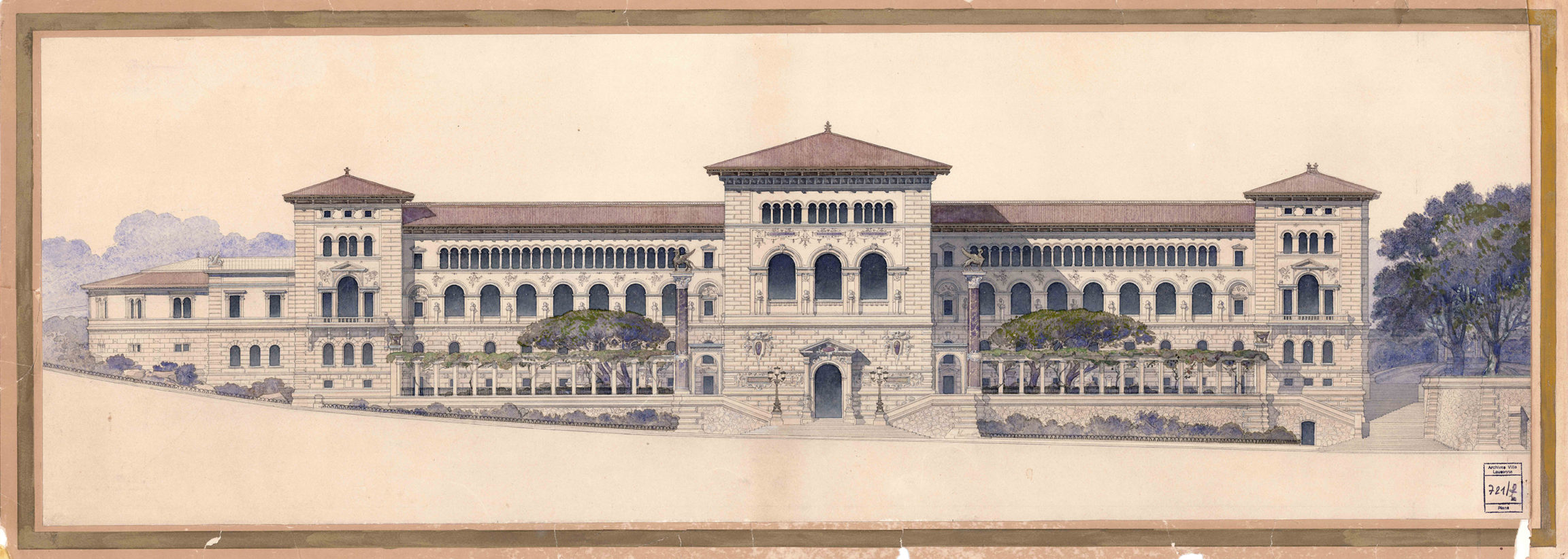
PLATEFORME 10
MCBA will open its doors in October 2019. The building offers ample space for temporary exhibitions and will house a permanent display from the collections, which have recently received a number of significant donations. The library will also be reopened. The new museum will also host the Toms Pauli Foundation and its collections, the Félix Vallotton Foundation, and the Balthus Archives.
In 2022, Juri Steiner will take over as director of the MCBA. An art historian from Zurich, he has built up a rich and varied career in the cultural field, including Expo.02, directorship of the Paul Klee Centre in Bern, and collaborations with the Swiss Pavilion at the 2005 World Expo, the Dürrenmatt Centre, and the Swiss National Museum.
